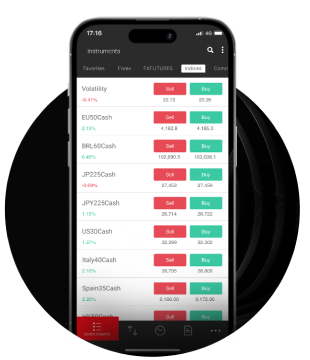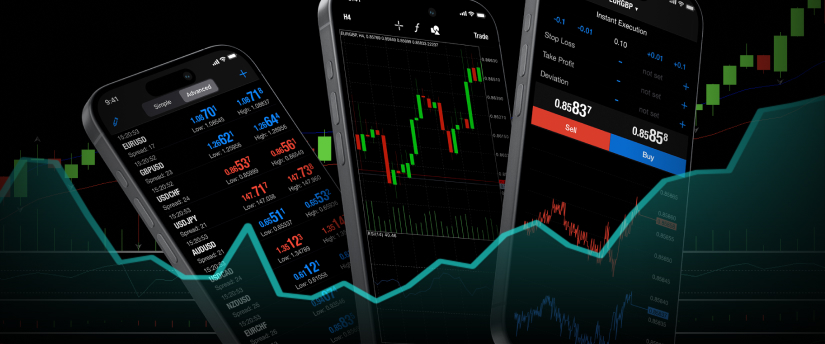Diverse opinions will always exist regarding the frequency of trading, duration of position holding, and timing of entry and exit from the market. However, there are some fundamental approaches and methods of trading.
A style is a collection of preferences that dictate how frequently and how long you will open trades. It will depend on your personality, risk tolerance, account size, and the amount of time you can commit to trading.
There are four common trading styles you can select from, though your style will be specific to you and the objectives stated in your plan.
Trading styles and strategies
스캘핑
Using small price fluctuations in an asset to your advantage is known as scalping. Scalpers look to profit from tiny price movements and typically hold a trading position for a very brief amount of time, a few seconds to a few minutes.
When using the scalping strategy, traders must take transaction costs and bid-ask spreads into account. These costs can be significant if they are not effectively managed due to the scalper’s high trading frequency.
Furthermore, because scalpers need to be able to enter and exit positions quickly in order take advantage of minute price movements, scalping calls for rapid decision-making, focus, and discipline.
Scalping has some disadvantages too. It may lead to expensive transaction costs like commissions and bid-ask spreads. This method can be extremely emotionally taxing and stressful. Scalping has a limited profit potential per trade due to its strategy of frequently capturing small profits. In order to manage multiple positions and reduce exposure to market risk, scalping calls for strong risk management.

Day trading
Day traders ad here to the rule that they must open and close all of their positions before the markets close for the day. To profit from temporary market movements, day traders may purchase and sell a number of assets during the trading day, or even more than once. By doing this, they are able to avoid some of the dangers and additional expenses that come with keeping a position overnight.
It takes time, attention, and commitment to a plan to trade consistently and efficiently throughout the day. In contrast to position trading, it entails making a lot of trades for comparatively little profit.
Because of this, it is crucial that day traders resist the urge to let a losing trade run because it could reduce their profits. Stops and limits are frequently used by day traders to reduce the risk of losses. While limits secure in any profits, stop-loss attachments to positions allow traders to maintain a known level of risk.
Day trading can also refer to other trading strategies like scalping, which frequently entail opening and closing positions in a single day.
Day trading carries a high risk of losing a large amount of money if the trader does not have a firm grasp of market trends and risk management strategies. Potential profits may be reduced by trading expenses. Due to its rapid pace, day trading can result in emotional choices like overtrading or holding onto losing positions for an extended period of time.
스윙 트레이딩
The goal of swing trading is to enter a position during a more significant move. It entails holding a trade for a few days or weeks in order to profit from short- to medium-term changes in the market.
Identifying trends and then taking advantage of the dips and peaks that offer entry points are the main objectives of swing trading. 기술적 분석 will be used by a swing trader to determine these important price points. They are searching for two different kinds of market movement: an upward “swing high,” or price movement, and a downward “swing low,” or price movement.
A swing high presents a possibility to sell a long position or open a short position, while a swing low represents a chance to buy into a long position or sell a short position. Since swings are most likely to occur in markets with high volatility, swing traders frequently look for these types of markets.

Since swing trading is entirely based on how long each trend lasts, there is no set timeframe. This might take one hour, or it could take a week. Swing trades will only be closed when the position is stopped out or a profit target is met. For traders who aren’t interested in going into a longer-term position but also don’t want to spend all day watching the market, this is the recommended approach.
Swing traders could encounter unexpected market developments that result in notable price swings. Because swing traders must spend time monitoring their positions and analysing market trends, this strategy, that can be used for 전문 트레이더, calls for a comparatively larger time commitment. Due to their short holding periods, a few days to a few months at most, swing traders may miss out on long-term price movements.
포지션 트레이딩
This strategy involves holding stock positions for a long time, typically ranging from several months to years or even decades. Position trading aims to capitalise on long-term market trends as opposed to cyclical price fluctuations. Compared to scalping, day trading, and swing trading, position trading is less active. Usually, institutions devote a section of their book to this strategy.
Position traders typically use 기본적 분석 to find undervalued or overvalued stocks, which they then hold for an extended period of time while they wait for the market to correct itself. Technical analysis is another tool that position traders can use to determine the best times to enter and exit.
Position traders could be subject to unforeseen market events that result in significant price swings. This strategy might make it more difficult for traders to seize opportunities in the short-term market. Long-term holding of positions can reduce a trader’s liquidity and make it more challenging to add new positions. To manage their positions and reduce their exposure to market risk, position traders need to have a strong risk management strategy.

최종 생각
Short-term strategies known as “active trading strategies” entail regularly purchasing and selling securities in order to capitalise on brief price changes in the market. Scalping entails placing trades in a matter of seconds or minutes in order to take advantage of slight price movements. Another type is day trading, which is keeping positions open for a single day in order to profit from short-term price movements.
On the other hand, swing trading is keeping positions open for a few days to several months in order to profit from intermediate price trends. In contrast, position trading entails maintaining positions for a considerable amount of time, typically several months or longer, in order to take advantage of significant market price trends.
All active techniques carry a high potential for profit, but they also carry a number of serious risks, such as volatility, expensive transaction costs, and emotionally driven trading decisions. To be successful, traders using these strategies need to have a firm grasp of technical analysis, market trends, and risk management strategies.
면책 조항:
고지 사항: 본 정보는 투자 자문이나 투자 권유가 아닌 마케팅 커뮤니케이션으로 간주해야 합니다.
















